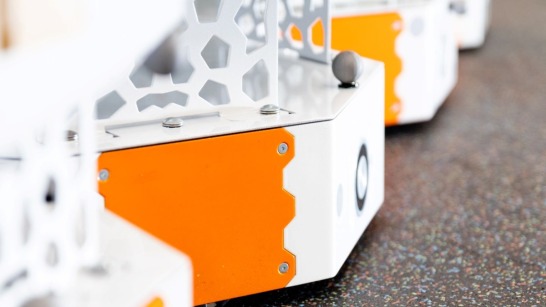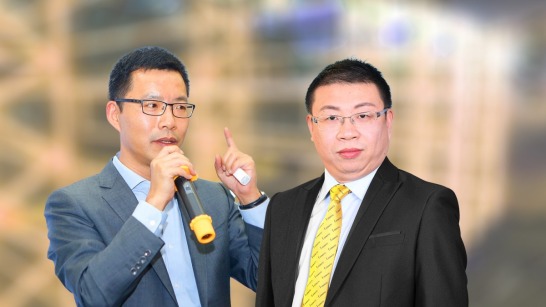Why did you choose to partner with the Enterprise Lab at Fraunhofer IML?
KION Group AG and Fraunhofer IML have been exchanging ideas for many years, and in the past, have also worked very successfully together, on the Dematic Multishuttle project, for example. We have followed all the research and development of the LoadRunner with great interest. We see this as the right time to join the project and take part in developing it further right up to industrialization. By investing in partnerships and developing autonomous mobile robots (AMRs), the KION Group has already taken significant steps toward expanding its solutions portfolio in recent years. We see the LoadRunner as a disruptive development toward AMR 2.0 that will take goods transportation in logistics and e-commerce to a whole new level.
What is the focus of your research at the lab?
Our research will focus on aspects of our customers’ sorting processes, by which I mean the distribution and allocation of goods in the logistics process. The range of relevant applications is extremely broad, running from parcel logistics to luggage logistics at airports. We also see the LoadRunner potentially contributing to future solutions in goods transportation. Applications which currently use conveyor belts could be realigned and streamlined—particularly for “just-in-time” goods deliveries in industrial manufacturing processes.
What benefits do you think the Enterprise Lab research offers?
The Enterprise Lab research enables KION to ensure close collaboration between theoretical research and practical implementation, including further development to ready the product for market. This collaboration gives us the opportunity to contribute specific aspects from the KION side so that we can set the course for enhancing the technology, including adapting the solutions to specific focus areas. To achieve this, employees from the Fraunhofer Institute are working closely with KION colleagues from the fields of Mobile Automation, Technology & Innovation as well as from the KION subsidiary Dematic, at the Dortmund site. Specialists from KION Energy Systems and KION Manufacturing & Engineering divisions are actively supporting them.
How important is the Enterprise Lab research in your overall strategy?
Because the KION Group’s portfolio covers such a broad spectrum, we naturally deal with a wide range of different developments. In LoadRunner, however, we see a great deal of disruptive potential for the future: a crucial solution to help provide greater flexibility and time savings in our customers’ applications.
How is the collaboration with Fraunhofer going so far?
The collaboration with the individual team members at Fraunhofer IML is and has been refreshing, solution-focused and constructive. The whole KION team is happy to continue working with them.



_image_546x307.jpg)
